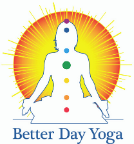
I invited you in my opener to view life from a different perspective to allow some magic into your life. Inversions can give you a different view of your world. So I invite you to try the following simple inversion to do just that.
“According to Pat Layton, physiology teacher for the Iyengar Yoga Institute of San Francisco’s Advanced Studies Program, “People have to do aerobics because they don’t invert. You have to run really hard—get the heart pumping hard—to circulate blood down to the feet and up the back. Not that you shouldn’t do aerobics, but inversions are a healthier way to get the benefits [to the circulatory system], particularly as you get older.” For more on how the practice of inversions is said to positively influence the cardiovascular, lymphatic, nervous, and endocrine systems of the body, go to: https://www.yogajournal.com/practice/everybody-upside-down/
Alignment Cues: Stand with your feet about 3-4 feet and turn your toes slightly toward each other. Inhale lift up the chest and extend the crown of your head up to the sky. Activate your abdominal muscles. Tilt your pelvis forward to keep the natural curve in the lumbar spine, keep the hips even, hinge at the hip as you exhale while maintaining length through the spine. Lead with your heart. Drop your head. Keep a hyper-bend in the knee and shoulders away from the ears. Push heels out a bit to bring weight to outer edges of foot. Keep feet flat on the floor and neck soft. Place palms flat on the floor if you can, shoulder-width apart

(or use a block under the hands for support).
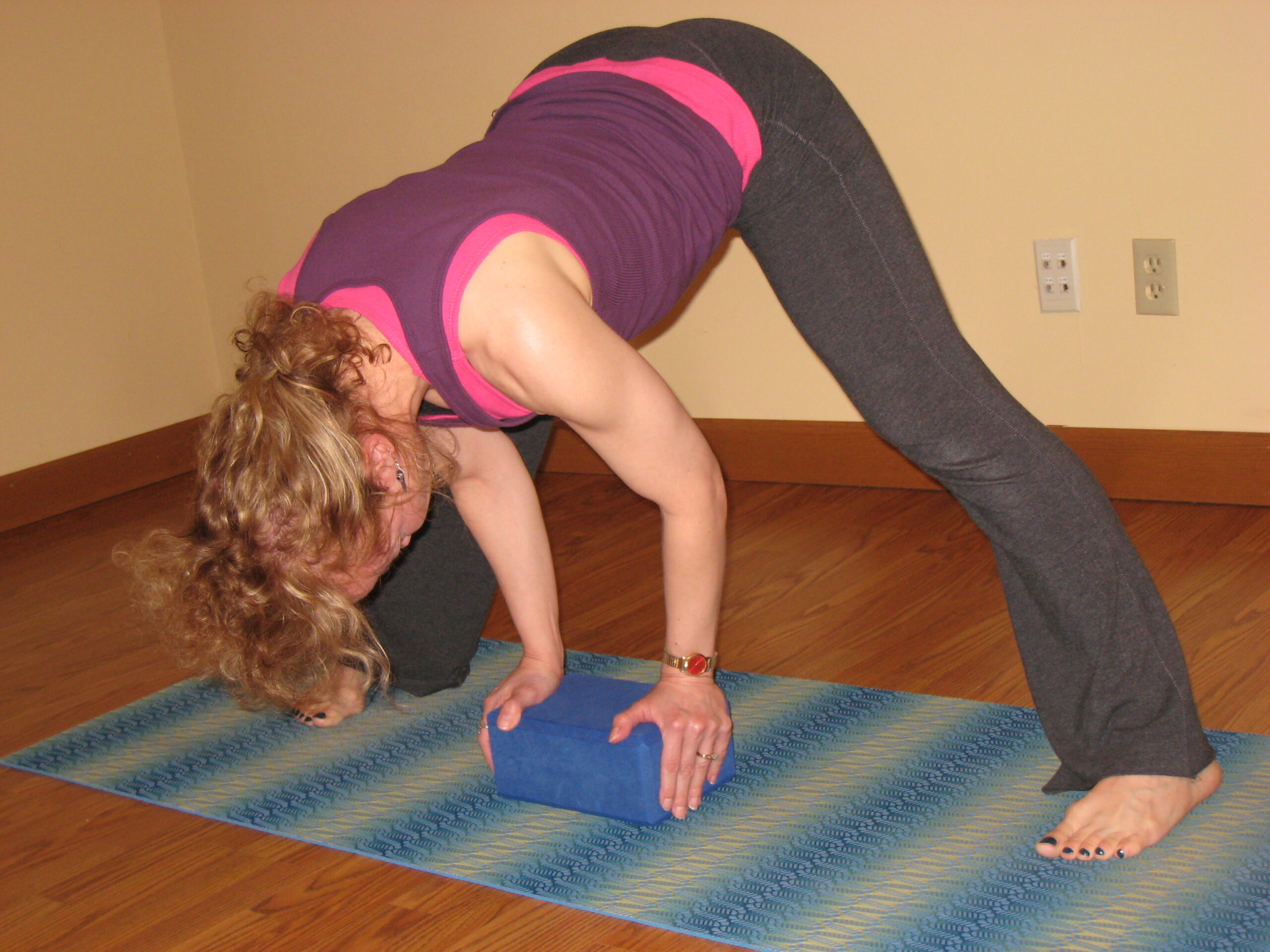
Internally rotate thighs. Walk your fingers back to be in line with the toes if they aren’t placed there already.
Advanced versions:
- For an extra stretch, you can, walk your fingers back to be in line with the heels and use the traction of the mat to gently pull your torso toward the thighs—if it feels good—never force.
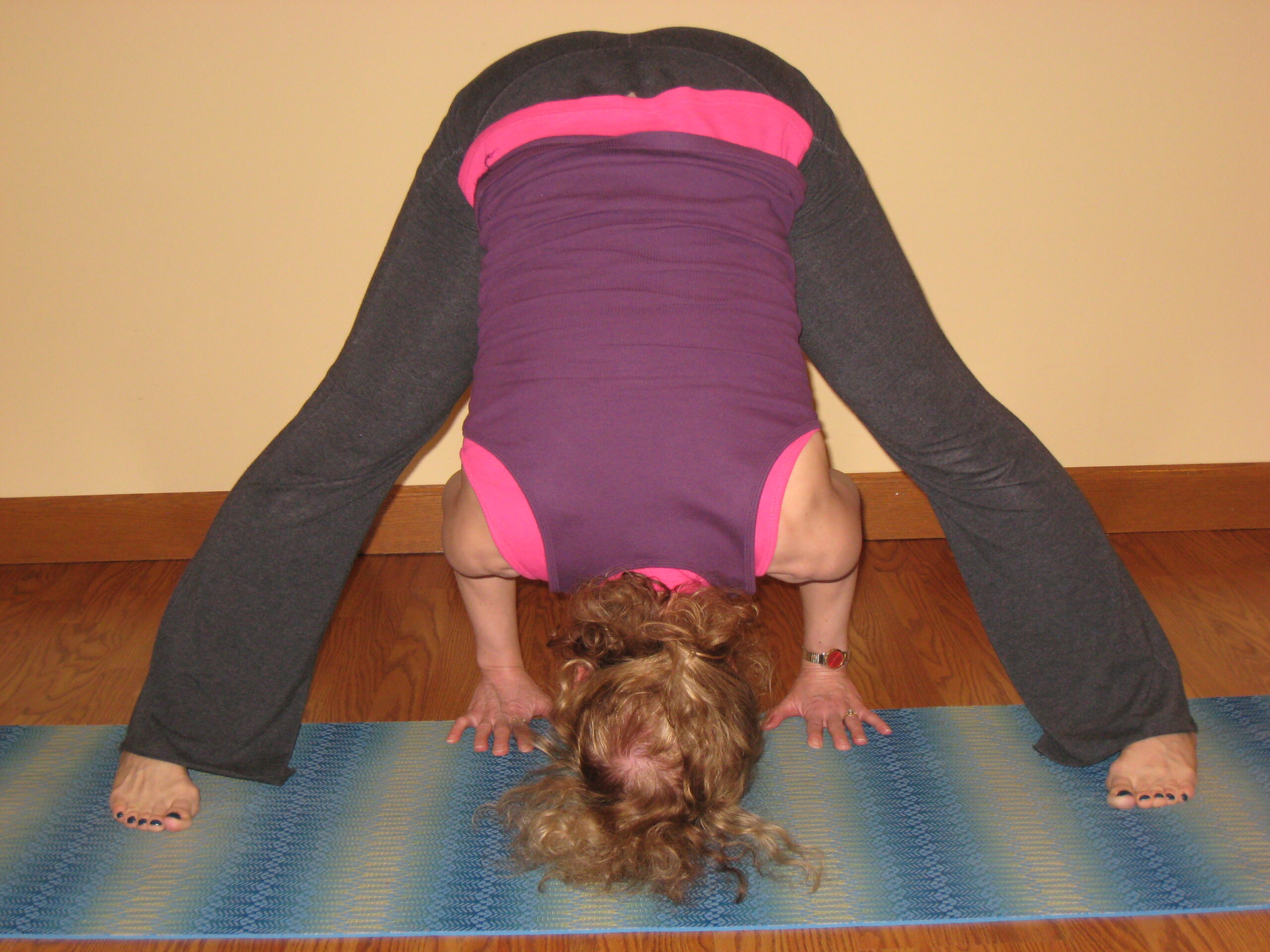
- Gently place your hands on the outside of the ankles.
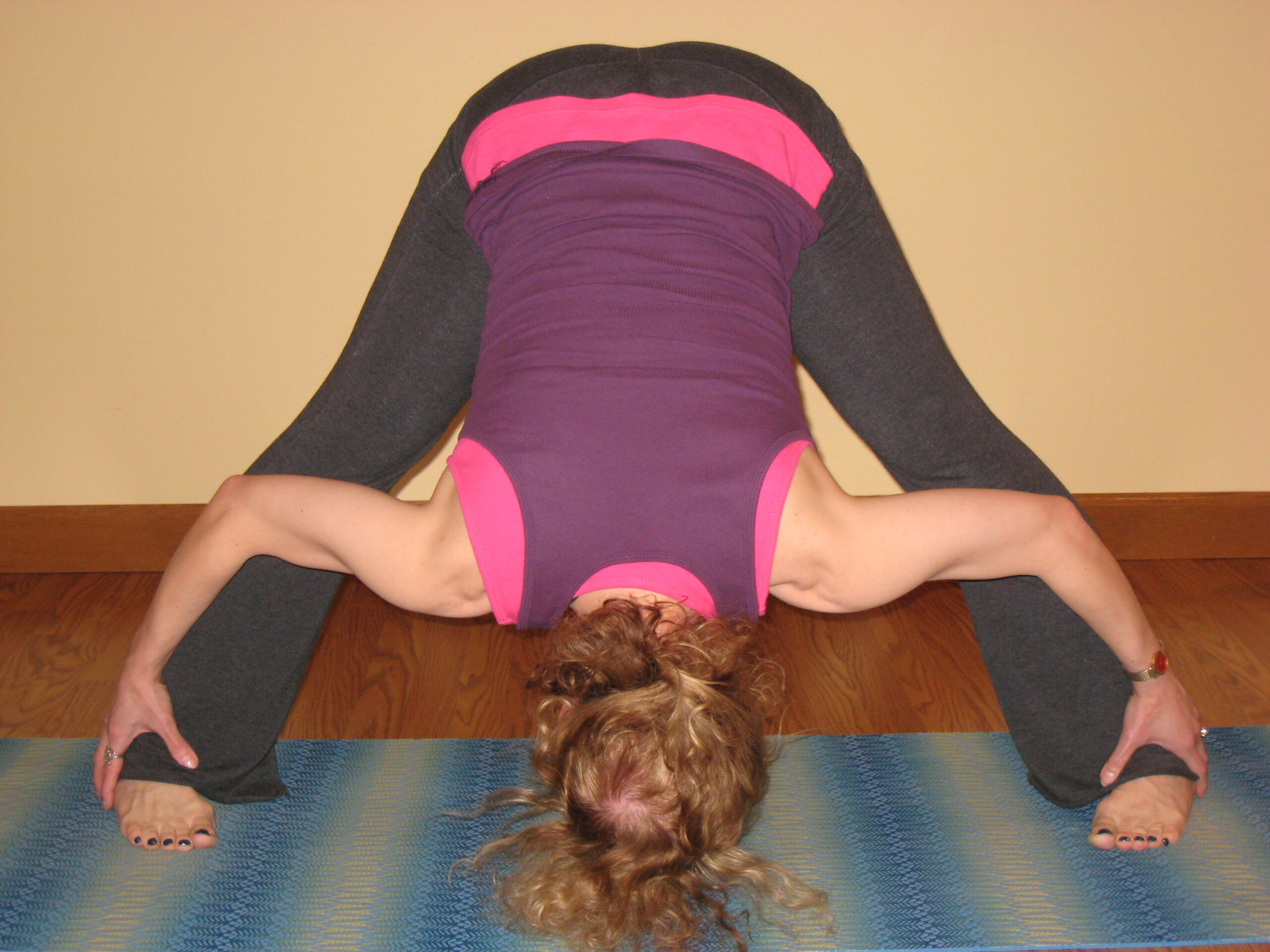
- Grab your big toes with your index and middle fingers.
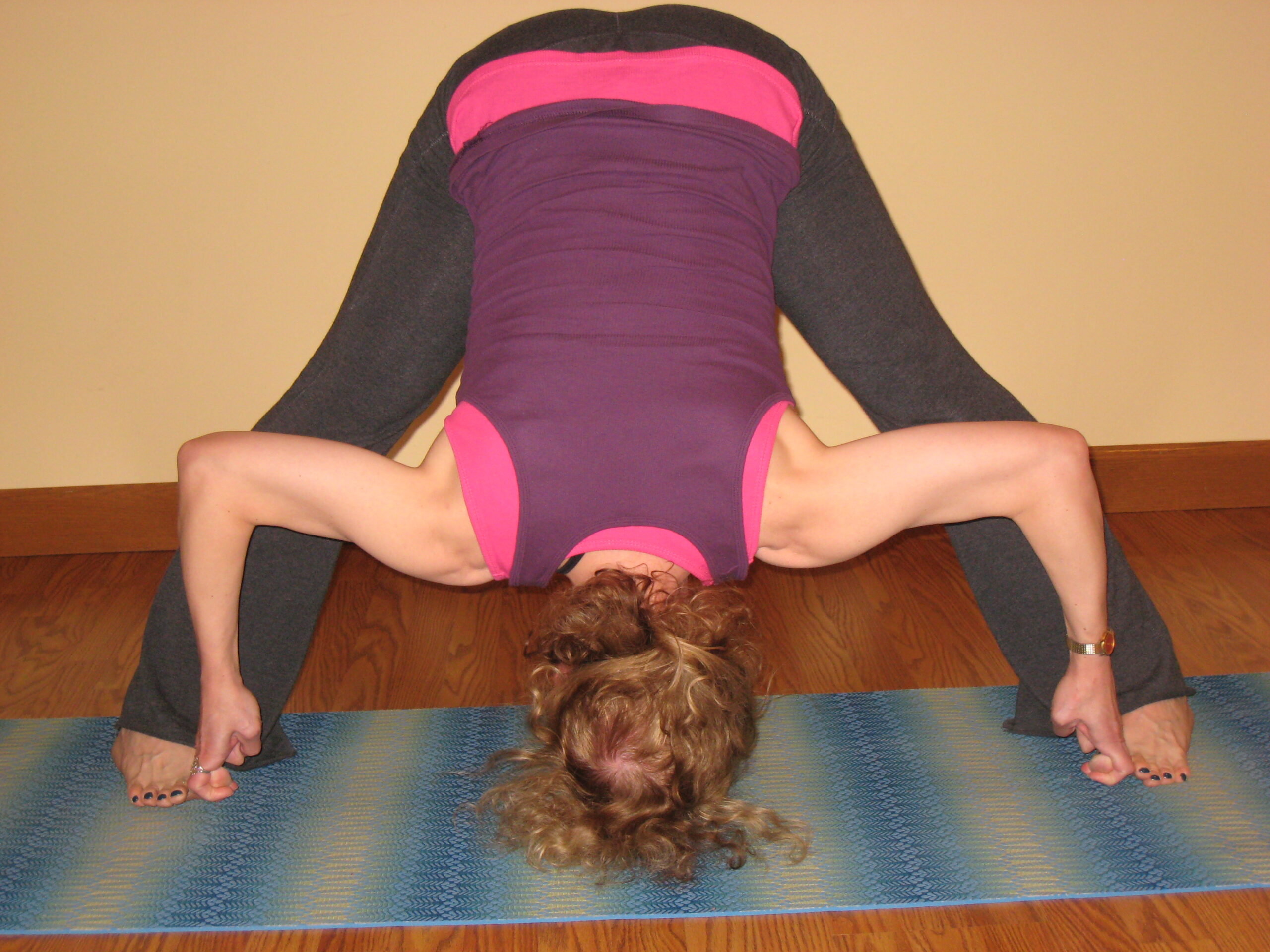
- Interlace your fingers behind you as in yoga mudra for chest expansion,
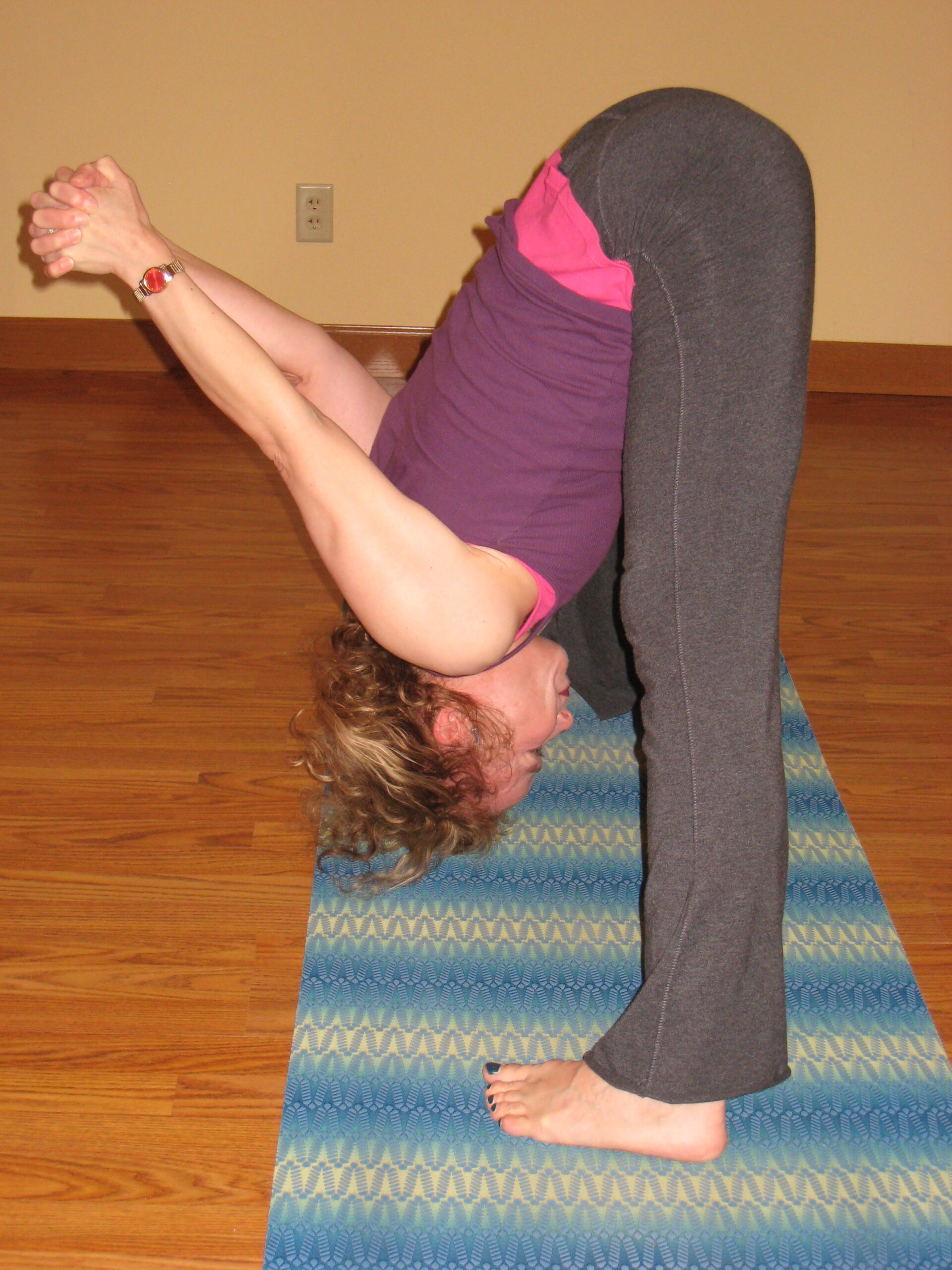
Balance problem? Use the wall as a prop behind you, (not pictured)
Beginner’s tip: Still unsure on your form or new to yoga? You can try a practice pose.
Start with knees bent, and feet turned out. Then hinge at the hip and reposition feet once bent. If the block under the hands still leaves you rounded in the back, add a chair under your forearms.
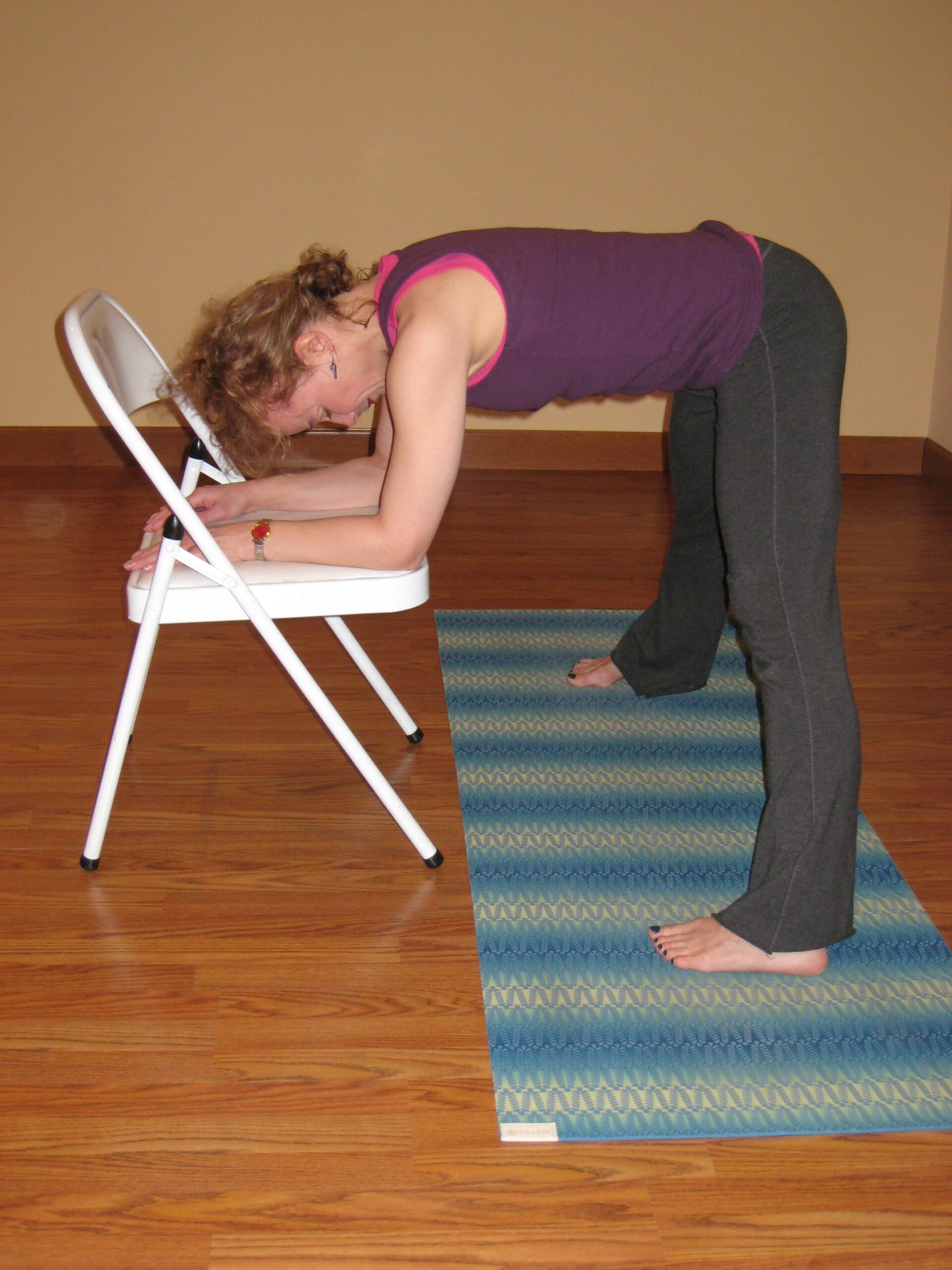
Add a flow—Twisting Straddle Forward Fold: Place your right hand palm down on the floor directly under your right shoulder to properly stack the joints for safety. If you can’t reach the floor, you can also use your fingertips or a block, and if you are working with carpal tunnel, you can use fists. Keep your spine parallel to the floor. Keeping your hips squared to the mat, inhale first while lengthening your spine. Exhale as you twist your mid-to-upper back and reach your left arm toward the sky. Use root lock to stabilize the pelvis, keeping lower body strong. Repeat other side.
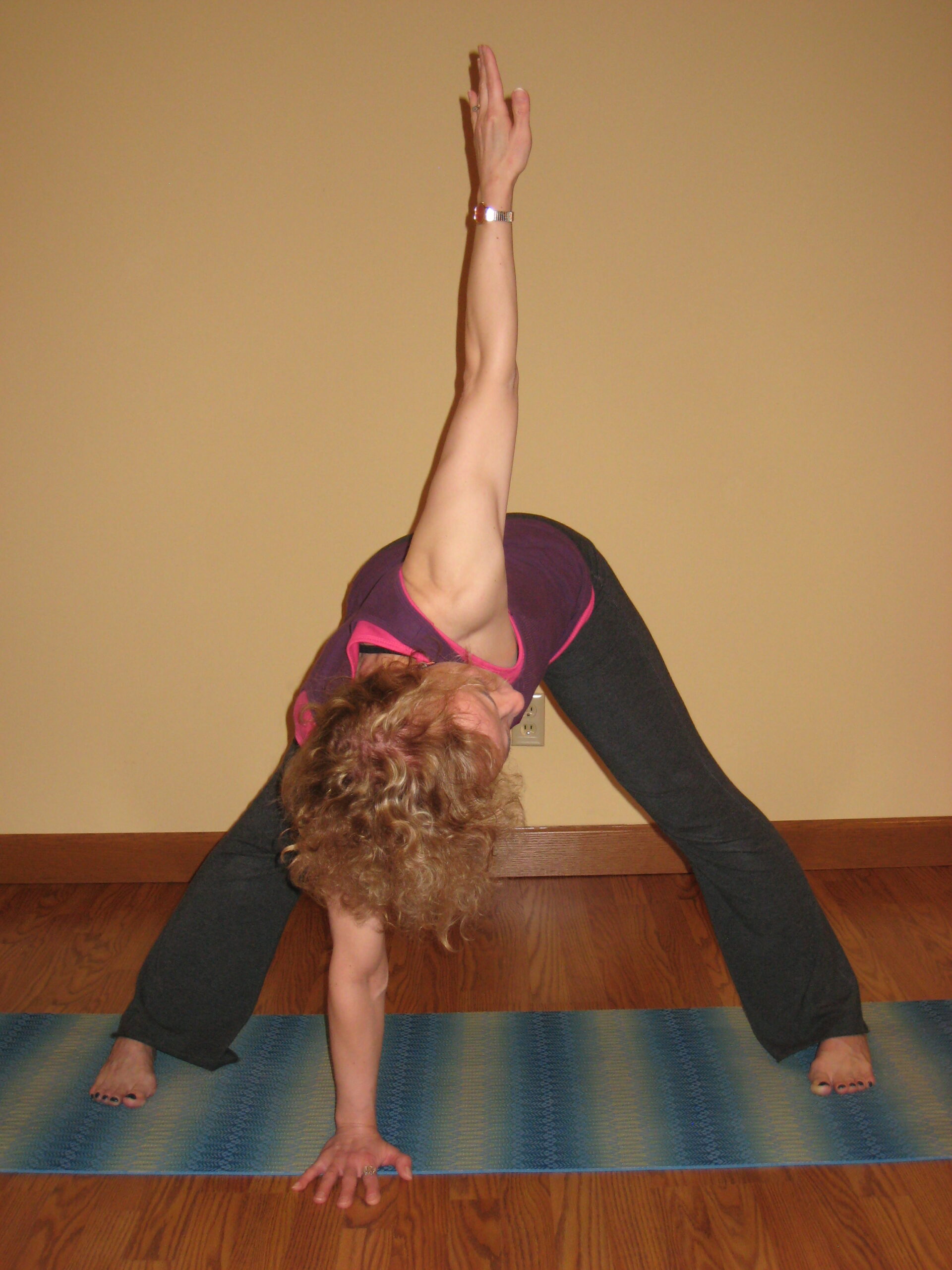
Benefits:
- Strengthens: Quads, Hip Flexors, Abs, Torso
- Stretches: Hip Adductors, Hamstrings, Lower Back, Ankles
- Increases circulation in abdomen
- Makes the hip joints more flexible
- Calms the brain, stimulating the third-eye and crown chakras
- Beneficial for: mild back ache, headache, fatigue, mild depression
- Quiets an sooths the nervous system
Contraindicated for:
- Low back problems (avoid full forward bend)
- Ankle or groin injury
- Detached retina or glaucoma
- Avoid during last month of pregnancy
- Avoid if you have concerns with your head positioned below your heart
Sources: YogaJournal.com, Beth Shaw’s YogaFit, second edition, 30 essential Yoga Poses for Beginning Students and their teachers, Judith Lasater, PhD, PT
